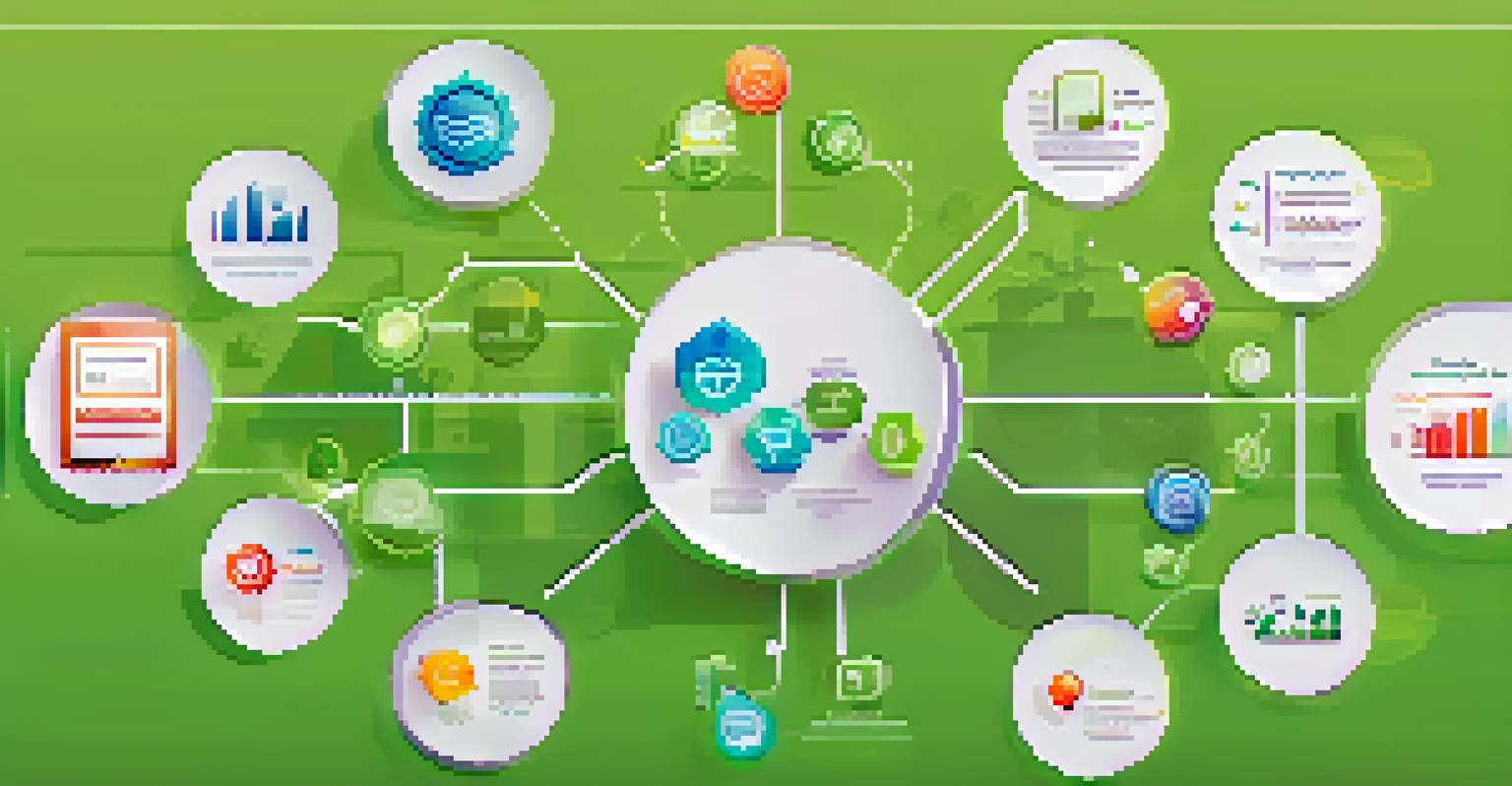Understanding Business Process Automation for Modern Enterprises

What is Business Process Automation (BPA)?
Business Process Automation (BPA) involves using technology to automate repetitive tasks within an organization. This can streamline workflows, reduce human error, and save time. Think of BPA as a way to let machines handle the mundane, freeing up employees to focus on more strategic activities.
Automation is cost cutting by tightening the corners and not cutting them.
BPA isn't just about replacing human effort; it's about enhancing the overall efficiency of a business. By automating processes, enterprises can ensure consistency and improve the quality of their outputs. It's like having a reliable assistant who never tires and always follows the same steps.
In today's fast-paced digital landscape, BPA is becoming essential for modern enterprises. Companies that embrace this technology can stay competitive and agile, adapting quickly to market changes and customer demands.
Benefits of Implementing BPA in Your Business
One of the most significant benefits of BPA is increased efficiency. By automating repetitive tasks, businesses can significantly reduce the time spent on these processes. Imagine cutting down hours of manual work into just minutes with a simple software solution.

Another advantage is cost savings. While there might be an initial investment in automation tools, the long-term savings from reduced labor costs and fewer errors can be substantial. For instance, consider how much a company could save by minimizing overtime and reallocating resources more effectively.
BPA Enhances Efficiency and Quality
Business Process Automation streamlines repetitive tasks, leading to improved efficiency and higher quality outputs.
Moreover, BPA enhances accuracy and consistency. Machines perform tasks with precision, reducing the likelihood of human error. This leads to higher quality outputs and greater customer satisfaction, which is crucial in retaining clients and building a strong brand reputation.
Common Processes Suitable for Automation
Not all processes are ripe for automation, but many common tasks can be easily automated. For example, data entry, invoicing, and customer onboarding are prime candidates for BPA. By automating these processes, companies can save time and ensure consistency.
The goal of automation is to make the world a better place for humans, not to replace them.
Another area where BPA shines is in customer service. Automated responses for FAQs or chatbots can provide immediate assistance to customers, allowing human agents to focus on more complex inquiries. This not only improves response times but also enhances the overall customer experience.
Additionally, automation can be applied to reporting and analytics. Instead of spending hours compiling data, automated tools can generate reports in real-time, giving businesses immediate insights into their performance and helping them make informed decisions.
Choosing the Right Tools for BPA
Selecting the right tools for BPA is crucial for successful implementation. Businesses need to assess their specific needs and workflows before choosing a solution. For instance, a company that handles a large volume of invoices may benefit from invoicing software that integrates seamlessly with their existing systems.
It's also essential to consider scalability. The tools you choose should be able to grow with your business. As your company expands, you don't want to be stuck with a tool that can't handle increased demands or new processes.
Cost Savings Through Automation
Implementing BPA can result in significant long-term cost savings by reducing labor costs and minimizing errors.
Lastly, user-friendliness is vital. If employees find the automation tools difficult to use, it can lead to frustration and resistance. Opting for intuitive platforms can encourage adoption and maximize the benefits of BPA.
Overcoming Challenges in BPA Implementation
Implementing BPA can come with its own set of challenges. One common hurdle is resistance from employees who may fear job loss or feel overwhelmed by new technology. It's important to communicate the benefits of BPA and involve employees in the process to ease these concerns.
Another challenge is the integration of automation tools with existing systems. Businesses often have a patchwork of software solutions, and ensuring they all work together can be complex. A careful evaluation of current systems and a phased approach to implementation can help mitigate this issue.
Additionally, organizations must invest time in training employees on new processes. Without proper training, even the best tools can fail to deliver results. Providing ongoing support can help employees adapt and make the most of the automation solutions.
Measuring the Success of Automation Initiatives
To understand the impact of BPA, businesses need to establish clear metrics for success. This could include measuring time saved, cost reductions, or increases in productivity. For example, tracking how much time employees save on repetitive tasks can provide insight into the effectiveness of the automation.
Customer feedback can also be a valuable metric. If automation improves response times and service quality, customer satisfaction should increase. Regularly soliciting feedback can help businesses fine-tune their automation processes and ensure they align with customer needs.
Future Trends in BPA
The future of BPA is poised to integrate advanced technologies like AI, enhancing productivity while complementing human capabilities.
Lastly, it's crucial to review and refine automation efforts continually. The business landscape is ever-changing, and what works well today might need adjustments tomorrow. Regular assessments can help organizations adapt their automation strategies to stay ahead.
The Future of Business Process Automation
As technology continues to evolve, so will the landscape of business process automation. Emerging technologies like artificial intelligence (AI) and machine learning are expected to enhance automation capabilities significantly. These advancements can help businesses make smarter decisions and optimize processes even further.
Moreover, the trend towards remote work has highlighted the need for efficient automation tools. As teams become more distributed, automation can help maintain productivity and streamline communication. It's becoming increasingly clear that BPA is not just a trend but a necessity for modern enterprises.

Ultimately, the future of BPA will likely focus on integrating human intelligence with automation. Instead of seeing BPA as a replacement for human workers, organizations will recognize its value as a tool that complements and enhances human capabilities, leading to a more productive and engaged workforce.